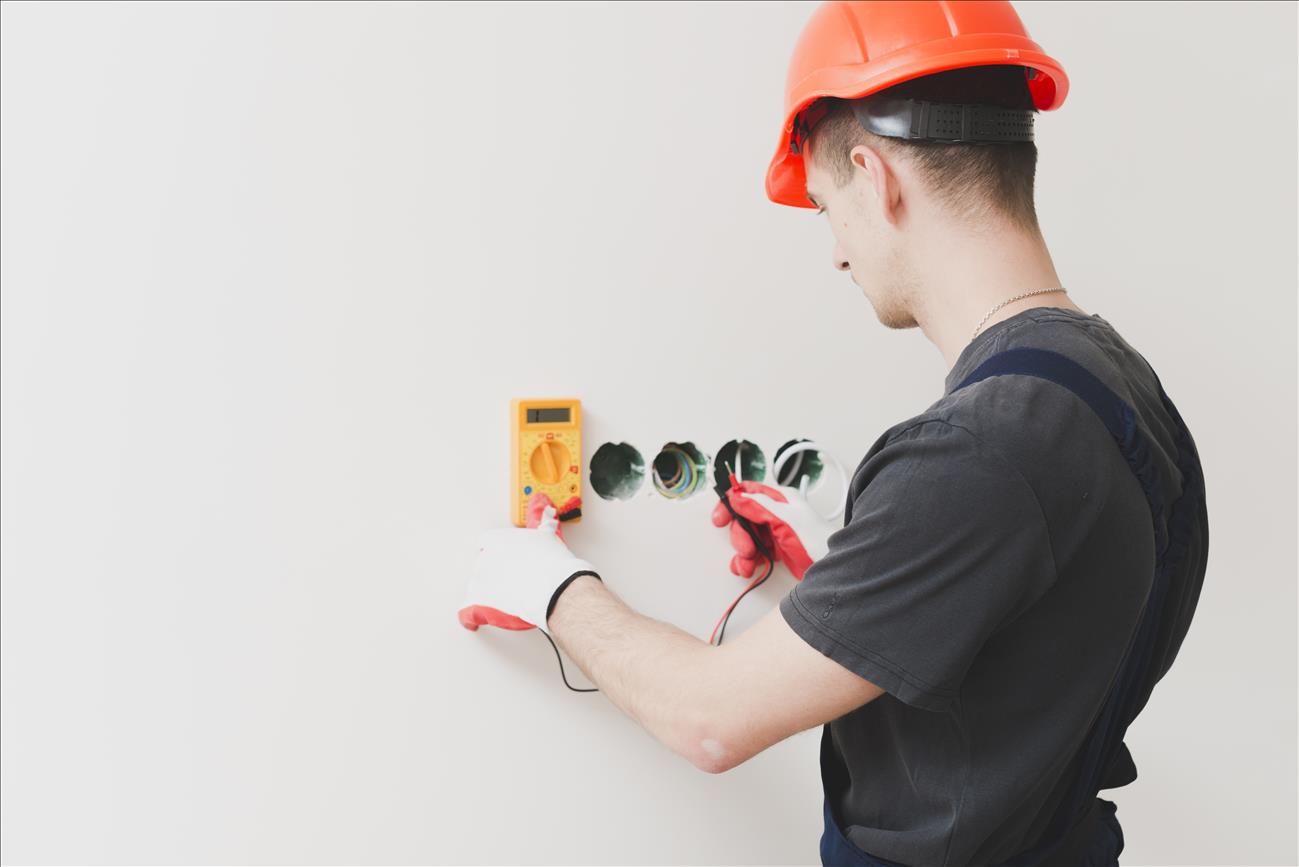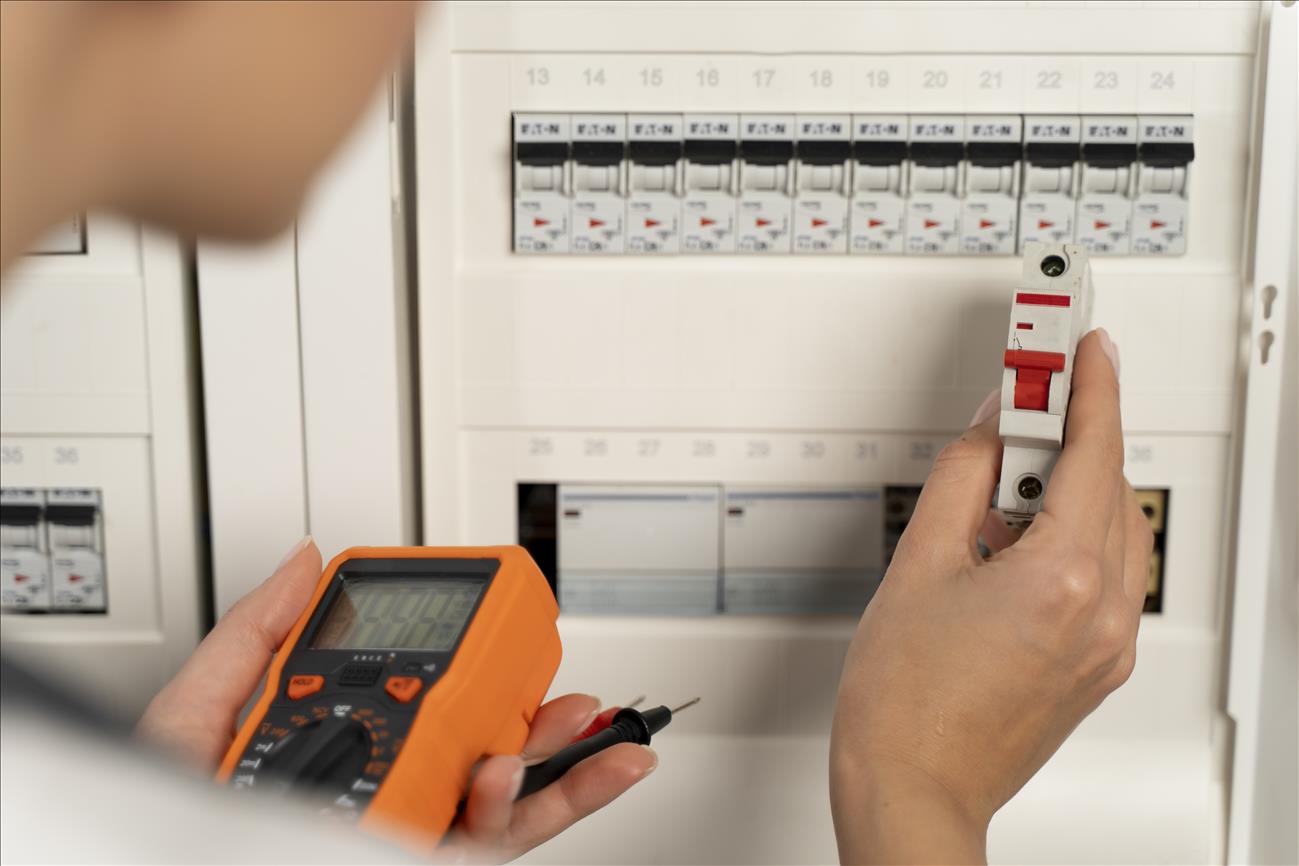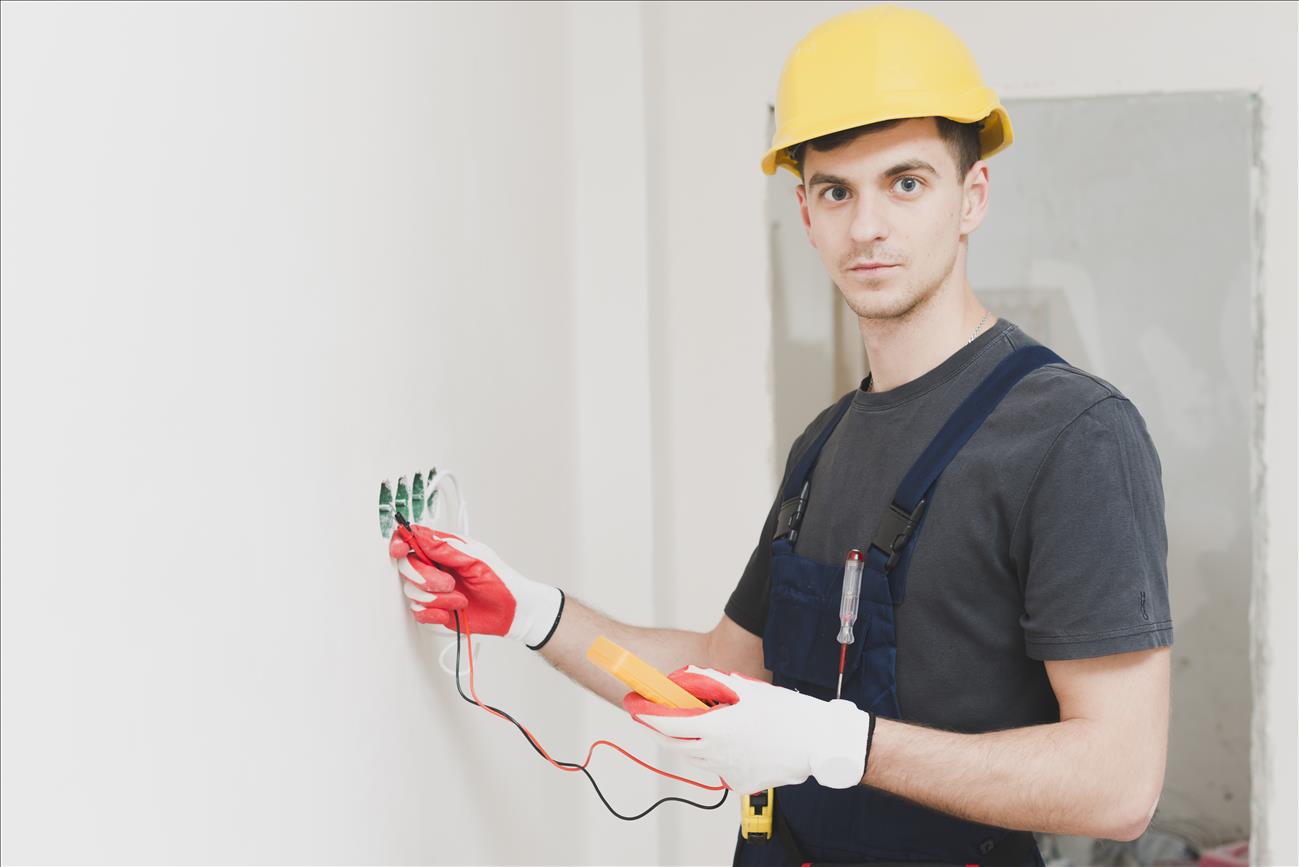Why Does My Circuit Breaker Keep Tripping


Lights go out. The TV shuts off. The kitchen appliances stop working. All of this happens in a second, and when you check, the circuit breaker has tripped again. A circuit breaker keeps tripping when there is a problem with the electrical system, and this can be frustrating, especially if it happens often.
A tripping circuit breaker is a common issue in many homes. It usually happens because of an overloaded circuit, a short circuit, or faulty wiring. While it may seem like just a small inconvenience, it is actually a safety feature that protects your home from electrical hazards like fires and shocks. Ignoring it or resetting the breaker without fixing the problem can lead to serious dangers.
Understanding why your circuit breaker keeps tripping is important. It helps you take the right steps to prevent bigger problems. In this guide, we will explain why this happens, how to fix it, and when to call a professional. By the end, you will know how to keep your home safe and prevent electrical issues from happening again.
What Is a Circuit Breaker and How Does It Work?
A circuit breaker is a small but very important device in your home’s electrical system. It controls the flow of electricity and shuts off power when something goes wrong. If your circuit breaker keeps tripping, it means it is detecting a problem and stopping electricity from flowing to prevent damage or danger.
Think of a circuit breaker like a security guard for your home’s electrical system. Its job is to stop too much electricity from flowing through the wires. If too many devices are plugged in or there is a problem like a short circuit, the breaker "trips" (shuts off) to stop overheating, fires, or shocks.
_1.jpg)
Here’s how it works:
- Electricity flows through wires in your home.
- If everything is normal, the circuit breaker stays on.
- If too much electricity flows or a dangerous issue happens, the breaker switches off automatically to prevent damage.
- You have to reset it manually by flipping the switch back on, but if the problem is not fixed, it will keep tripping.
If your circuit breaker keeps tripping, it means there is a serious issue that needs attention. It could be too many appliances on one circuit, faulty wiring, or an electrical fault. Understanding how it works can help you prevent bigger problems and keep your home safe.
Is It Dangerous if the Circuit Breaker Keeps Tripping?
Yes, if your circuit breaker keeps tripping, it can be dangerous. A circuit breaker is designed to protect your home from electrical hazards. When it trips, it means something is wrong—either too much power is flowing, there is a wiring issue, or there is a faulty appliance. Ignoring it and simply resetting the breaker without fixing the problem can lead to serious risks.
One major danger is electrical fires. If the breaker is shutting off due to an overloaded circuit or damaged wiring, forcing it back on repeatedly can cause overheating, which may start a fire inside the walls. Another risk is electric shocks. If the wiring is damaged or there’s a short circuit, touching an outlet or appliance could result in a dangerous shock.
Frequent tripping could also mean your electrical system is outdated. Older homes may not handle modern power needs, leading to constant overloads. In this case, you may need to upgrade your electrical panel.
If your circuit breaker keeps tripping, don’t ignore it. Find out the cause and fix it. If you’re unsure, call a professional electrician to check for serious electrical problems and keep your home safe.
Common Reasons Why Your Circuit Breaker Keeps Tripping
If your circuit breaker keeps tripping, it means there is a problem with your electrical system. It is not something you should ignore because it can lead to bigger issues like damaged appliances, electrical fires, or shocks. Here are the most common reasons why this happens and what you can do about it.
Overloaded Circuit
An overloaded circuit happens when too many devices are plugged into the same circuit, pulling more electricity than it can handle. When this happens, the circuit breaker trips to prevent overheating.
Think about your kitchen appliances. If you are using a microwave, coffee maker, toaster, and blender at the same time, that’s a lot of power running through one circuit. The breaker senses this overload and shuts off the power to stop wires from getting too hot.
A simple way to check for an overloaded circuit is to unplug some devices and reset the breaker. If it stays on, then you are using too much power on one circuit. The best solution is to spread appliances across different outlets or use a dedicated circuit for high-power devices.
If your circuit breaker keeps tripping even after unplugging devices, the issue might not be an overload. It could be a short circuit or faulty wiring.

Short Circuit
A short circuit happens when electricity takes the wrong path and flows where it shouldn’t. This usually happens because of damaged wiring or faulty appliances. When this occurs, the circuit breaker shuts off immediately to prevent a dangerous situation.
Signs of a short circuit include:
- A burning smell coming from outlets or appliances
- Black marks or melted areas around outlets
- Sparks or buzzing sounds when plugging in something
For example, if you plug in a lamp and the breaker immediately trips, the problem might be inside the lamp’s wiring. Try plugging the lamp into another outlet to see if it happens again. If it does, the lamp is faulty and should be replaced.
If your circuit breaker keeps tripping even when nothing is plugged in, there could be worn-out or exposed wires inside your walls. This is very dangerous, and you should call an electrician right away.
Ground Fault
A ground fault occurs when electricity leaks out of the wiring system and flows into the ground. This often happens in wet areas like kitchens, bathrooms, and outdoor outlets.
Ground faults are dangerous because they can cause electric shocks. That’s why homes have GFCI (Ground Fault Circuit Interrupter) outlets in places with water exposure. These outlets shut off automatically if they detect a ground fault.
If your circuit breaker keeps tripping in a bathroom or kitchen, check if the GFCI outlet has tripped. You can reset it by pressing the reset button on the outlet. If it keeps tripping, there may be water damage or faulty wiring, and an electrician should inspect it.
Aging or Faulty Breaker
Sometimes, the problem is not with the wiring or appliances—it’s the circuit breaker itself. Over time, breakers wear out and become weak, causing them to trip even when there’s no real issue.
If your circuit breaker keeps tripping for no clear reason, it might be too old or damaged. Breakers have a lifespan of about 20-30 years, but they can fail earlier due to power surges or frequent tripping.
If your home has an old electrical panel, or if the breaker feels loose and doesn’t stay in place, it’s time to replace it. Upgrading your breaker can prevent unexpected power failures and improve safety. It’s best to hire a licensed electrician to check if your breaker needs replacement.
How to Fix a Tripping Circuit Breaker
If your circuit breaker keeps tripping, the first step is to find out what’s causing the problem. Once you know the cause, you can take the right steps to fix it. Follow these simple steps to restore power safely and prevent further tripping.
Step 1: Identify the Cause
Before resetting the breaker, find out why it tripped. A breaker can trip due to three common reasons:
- Overloaded Circuit: Too many devices are using power from the same circuit.
- Short Circuit: Damaged wiring or faulty appliances are creating a dangerous flow of electricity.
- Ground Fault: Electricity is leaking, often in areas with moisture like kitchens or bathrooms.
To check the cause:
- Look at what was running when the breaker tripped. Were you using multiple appliances at once? This could be an overload.
- Smell for burning or look for black marks on outlets. If you notice these, you may have a short circuit.
- Check if a GFCI outlet has tripped. If so, a ground fault could be the problem.
Once you identify the cause, you can take the right steps to fix it.
Step 2: Reduce Load on the Circuit
If the circuit breaker keeps tripping due to an overload, you need to reduce the amount of power being used on that circuit.
Here’s what to do:
- Unplug some devices and reset the breaker. If it stays on, you are using too much power.
- Spread appliances across different outlets. Avoid plugging multiple high-wattage devices (like microwaves and space heaters) into the same circuit.
- Use dedicated circuits for big appliances. Large appliances like refrigerators and air conditioners should be on their own circuits.
If reducing the load solves the problem, then you were overloading the circuit. If the breaker keeps tripping even after unplugging devices, you may have a short circuit or another electrical issue.
Step 3: Check for Faulty Appliances
A faulty appliance can cause a circuit breaker to trip. If your circuit breaker keeps tripping when a certain device is plugged in, that device could be the problem.
To test this:
- Unplug all appliances in the affected area.
- Reset the breaker and plug in one appliance at a time.
- If the breaker trips when a certain appliance is plugged in, that appliance is faulty.
For example, if your breaker only trips when you turn on a lamp, the wiring inside the lamp might be damaged. Stop using the faulty device and replace or repair it.
If none of your appliances seem to be the issue, the problem could be damaged wiring or an old breaker.
Step 4: Inspect Wiring and Outlets
If your circuit breaker keeps tripping even when appliances are unplugged, damaged wiring might be the problem. Faulty wires can cause short circuits and even fires, so this is something you should check carefully.
Look for these warning signs:
- Burn marks or blackened outlets
- A buzzing sound coming from the breaker box or outlets
- A burning smell near electrical panels
If you notice any of these signs, call an electrician immediately. Do not try to fix wiring issues yourself, as working with electrical wires is dangerous.
If everything looks normal and the breaker still trips, the breaker itself may be faulty and need replacing. In this case, a professional can check your electrical panel and replace old or damaged breakers.
When to Call an Electrician
If your circuit breaker keeps tripping even after you have tried fixing it, it might be time to call a professional electrician. Some electrical problems are too dangerous to handle on your own, and trying to fix them without the right knowledge can lead to electric shocks, fires, or serious damage.
Here are some clear signs that you need professional help:
- Frequent Tripping: If the breaker trips even when you are not using many devices, there may be a deeper wiring issue.
- Burning Smell or Scorch Marks: A burning smell near outlets or the breaker panel is a sign of overheating wires, which can cause a fire.
- Buzzing Sounds from the Breaker Box: If you hear a buzzing or crackling noise, the breaker may be failing and needs to be replaced.
- Old Wiring: Homes with outdated electrical systems (more than 20-30 years old) may not handle modern power needs, causing constant breaker trips.
- Breaker Won’t Stay Reset: If the breaker trips immediately after you reset it, there is likely a serious issue with the wiring or an appliance.
Safety Warning: Never try to fix electrical wiring yourself unless you are a trained professional. Electrical work can be extremely dangerous. If your circuit breaker keeps tripping and you suspect faulty wiring or a damaged breaker, call a licensed electrician immediately. Ignoring the problem can put your home and family at risk.

Preventing Future Circuit Breaker Issues
If your circuit breaker keeps tripping, fixing the problem is important, but preventing it from happening again is even better. By managing your electrical load, maintaining your system, and upgrading old wiring, you can keep your home’s electricity running safely and smoothly.
Use Proper Electrical Load Management
One of the main reasons a circuit breaker keeps tripping is overloading. This happens when too many high-wattage appliances are using power from the same circuit. To prevent this:
- Spread out heavy appliances like microwaves, air fryers, and heaters across different circuits instead of plugging them into the same outlet.
- Use dedicated circuits for large appliances like refrigerators, washing machines, and air conditioners.
- Avoid using too many extension cords and power strips—these can overload a single circuit quickly.
If your home does not have enough circuits to handle your power needs, consider installing additional circuits to distribute the electrical load better. This will prevent frequent breaker trips and improve safety.
Regular Maintenance & Inspection
Regular maintenance is key to preventing unexpected electrical problems. Here’s what you should do:
- Check your electrical panel once a year for signs of wear, loose connections, or burning smells.
- Test GFCI outlets in bathrooms, kitchens, and outdoor areas to ensure they are working properly.
- Watch for warning signs like flickering lights, frequent tripping, or buzzing sounds from outlets.
If your home is more than 20 years old, consider scheduling a professional electrical inspection. Older homes may have outdated wiring that cannot handle modern electrical demands, increasing the risk of overheating and tripping breakers. A licensed electrician can check your system and recommend any necessary upgrades.
Upgrade Old Electrical Systems
Many older homes were built when households used fewer electrical devices. Today, we use more appliances, computers, and smart devices, requiring more power. If your circuit breaker keeps tripping, your home’s electrical system may be outdated and struggling to handle modern energy use.
To prevent issues, consider upgrading to:
- A higher-capacity electrical panel that can support more circuits.
- New wiring that meets current safety standards.
- Modern circuit breakers that provide better protection against overloads and faults.
An electrical upgrade may seem like a big investment, but it prevents long-term issues, improves safety, and ensures your home’s electricity runs smoothly. If you frequently experience tripped breakers, consult an electrician to see if an upgrade is necessary.
Conclusion
A circuit breaker keeps tripping for a reason—it’s a built-in safety feature that protects your home from electrical overloads, short circuits, and ground faults. While it may seem like an inconvenience, frequent tripping is a sign that something needs to be fixed.
We’ve covered the most common reasons why your circuit breaker keeps tripping, including overloaded circuits, faulty appliances, wiring problems, and aging breakers. We also discussed how to identify the cause, reduce the electrical load, check for faulty appliances, and inspect your wiring. If the problem continues despite your efforts, it’s time to call a professional electrician.
Ignoring electrical issues can lead to serious risks like fires, shocks, or damage to your appliances. That’s why it’s important to take action immediately when your breaker keeps tripping. Regular maintenance, proper electrical load management, and upgrading outdated systems can help prevent future electrical problems and keep your home safe.
